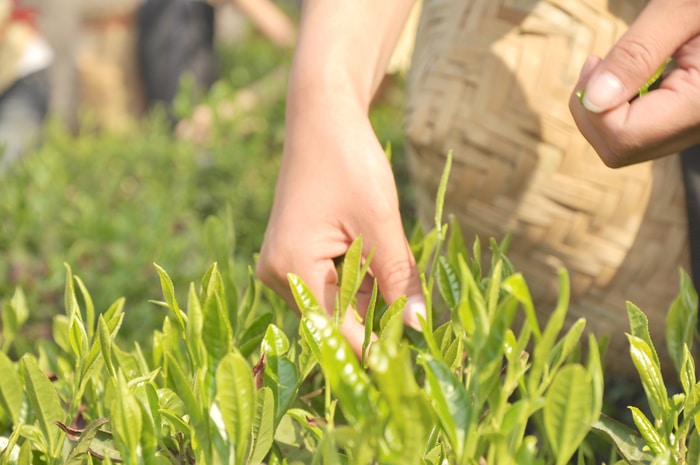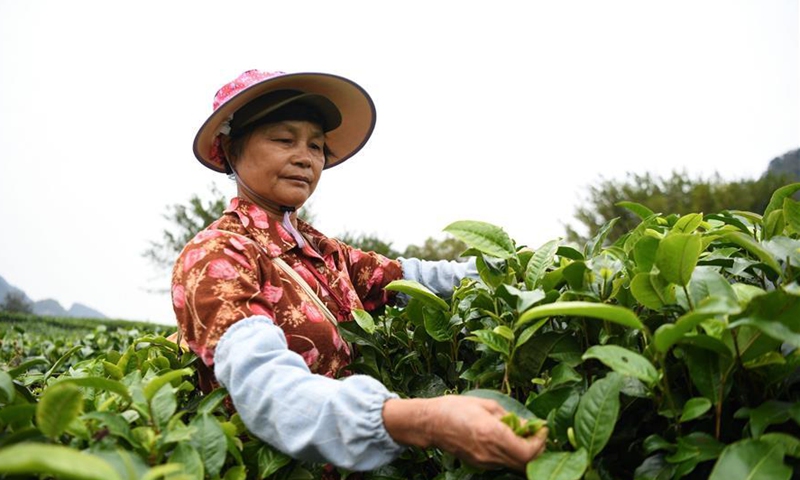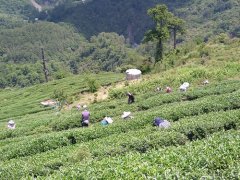How many seasons of tea are picked in a year? What's the difference in tea from season to season? Which season is the best for tea?
When was this tea picked? The answer to this simple question tells us a lot of things, including:
The expected quality of the taste of tea
The cultural value of tea
The authenticity of the product
Tea is well taken care of in the process of production and is not polluted.
As early as the Tang Dynasty in China, the tea harvested for the first time in a year had the greatest value. This is mainly due to cultural reasons; the first batch of tea shipped from Sichuan had to pass through the Central Plains through the difficult road or Zhejiang, and arrived at the court before the Qingming Festival, and the emperor would send the tea to the Temple of Heaven as a sacrifice to the emperor's ancestors. The first to arrive is always the best, because he is the first to arrive.

The price of spring tea is still the highest and is famous for its good taste.
The unique taste of Chunpao tea is related to the chemicals inside the tea, as the tea tree wakes up from winter dormancy and responds to the lower temperatures of the season.
Dormancy concentrates nutrients on the growth of new leaves. During this period, due to the limited sunshine time, low air temperature and foggy hillside, the new tea will remain small. The earliest tea-making period does not produce much tea, so scarcity is also a factor in the value of spring tea.
Unlike the first kind of tea this year, tea grown in summer is vulnerable to a large number of insects without the use of pesticides and lacks the complexity and sweetness of amino acids rich in tea grown in spring.
In many areas, summer tea is never picked because the quality of the final product is very low. In places where summer tea is made, it is often seen that tea makers devote less energy to production because they know that tea tastes bad and can be sold at a lower price in the market. and the extra cost of careful picking and production cannot be justified. This is especially true in China.

The picking time of many high-quality tea is very short. Missing this time is a disaster for this year's crops. Sometimes this window is significantly affected by the weather. For example, in the cold early spring, Anji white tea is a sweet tea containing amino acids, which shows a distinct yellow in the first few weeks of spring.
Once the temperature rises above 25 degrees Celsius (77 degrees Fahrenheit), the leaves of shrubs turn green and lose their unique chemical composition. Baijiguan, a variety with the same changeable temperament, has only four days to harvest-the leaves in the first two days are very different from those in the next two days. Several consecutive days of rain during this time can have a disastrous effect.
Adding weather information about the harvest season may provide a more detailed and interesting perspective on harvest decisions and the final taste of the tea.
Important Notice :
前街咖啡 FrontStreet Coffee has moved to new addredd:
FrontStreet Coffee Address: 315,Donghua East Road,GuangZhou
Tel:020 38364473
- Prev

How to solve the problem of steaming coffee by hand without drumming hamburger? influence on the flavor of steaming coffee
Steaming is the first stage of hand flushing with water to let the coffee powder exhaust and bulge a large hamburger. steaming also has an important effect on the flavor of a cup of coffee. To make a good cup of hand-made coffee, the details of steaming are destined not to be ignored. Will the coffee that is steamed and not bulging taste bad? It is believed that most of our friends have tried such situations as steaming hamburgers and not drumming hamburgers, and most of them blame coffee.
- Next

What are the more famous brands of Taiwan tea? what are the top ten famous tea brands in China and Taiwan?
The origin of tea species: tea (Camellias 1nens1s L. Kuntze) is the most important cash crop in the family Theaceae and Camellia. Among the tea species, there are many subspecies, and the five most important species are Chinese leafy species (C Sinensis Var. Sinensis) and Asam species, or C Sinensis Var. Assamic
Related
- Beginners will see the "Coffee pull flower" guide!
- What is the difference between ice blog purified milk and ordinary milk coffee?
- Why is the Philippines the largest producer of crops in Liberia?
- For coffee extraction, should the fine powder be retained?
- How does extracted espresso fill pressed powder? How much strength does it take to press the powder?
- How to make jasmine cold extract coffee? Is the jasmine + latte good?
- Will this little toy really make the coffee taste better? How does Lily Drip affect coffee extraction?
- Will the action of slapping the filter cup also affect coffee extraction?
- What's the difference between powder-to-water ratio and powder-to-liquid ratio?
- What is the Ethiopian local species? What does it have to do with Heirloom native species?

